What Kind of Threat is “Checking visitor pop-up”?
Security report of the week has listed few new names of threats including Checking visitor pop-up virus. Actually, it's a detection name used to identify a suspicious pop up window that is displayed when a victim opens browsers like Google Chrome, Mozilla Firefox, Internet Explorer, Safari, Opera etc. This pop up (sort of adware) takes control over your browsers by embedding a malicious script into their source code without your consent. Moreover, Checking visitor pop-up is triggered by an adware program which redirects to a custom URL – “imwhite.ru/cs?wsa=59170dc59dd2938574025” that is being operated from Moscow, Russia. Pop ups injected by the adware seems to be hosted on 46.4.70.113 IP address. Evidently, we've seen Checking visitor pop-up injecting ads with the tagline “Russian Ads.”

During online research we found these domains – ijquery11.com, h8.ijquery11.com, imycpm.ru, linkmyc.com and mtbuy.ijquery11.com associated with the adware. Victim are constantly redirected to these domains where con artists show unbelievable offers and promotional contents in order to collect revenue from taking advantages of internet users' unsuspecting habits. If you pay closer attention, you can recognize scams hidden behind the attractive ads. Checking visitor pop-up virus employs intrusion tactics that we have previously seen with WizzRelease and CouponHelper ads. Furthermore, you should know that the adware runs from Temp location and add itself as a background service to inject direct revenue code into famous browsers like Firefox, Chrome, Internet Explorer etc.
Distribution Means Being Used For Spreading Checking visitor pop-up
- Primarily, freeware installers or downloaders are being used for spreading Checking visitor pop-up virus among Windows users today.
- Free file hosting sites, p2p networks, pornographic sites and hacked domains are also involved in the distribution of adware.
- Sometimes, malicious file downloader Trojans also download configurable files of the adware and install it on your Windows machine without any consent.
Therefore, there are only few ways to safeguard your computer against Checking visitor pop-up adware – take control over your suspicious activities or use Anti-spyware. You should know that it might not be as harmful as virus or malware but it poses direct threat to your privacy by spying on your online activities and sending collected data to interested third parties. Hence, it is important that you remove Checking visitor pop-up adware from your computer using following instruction:
Click to Free Scan for Checking visitor pop-up on PC
Learn To Remove Checking visitor pop-up Using Manual Methods
Phase 1 : Show Hidden Files To Delete Checking visitor pop-up Related Files And Folders
1. For Windows 8 or 10 Users : From the Ribbon’s View in My PC click on Options icon.

2. For Windows 7 or Vista Users : Open My Computer and tap on Organize button on the upper left corner and then to Folder and Search Options from the drop down menu.
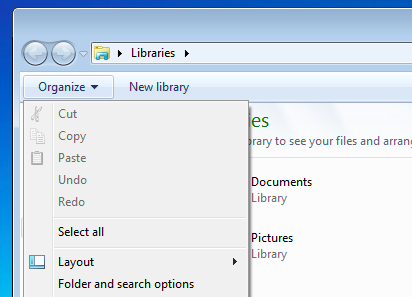
3. Now go to the View tab and enable Show hidden files and folder options and then uncheck the Hide protected system operating files checkbox option below.
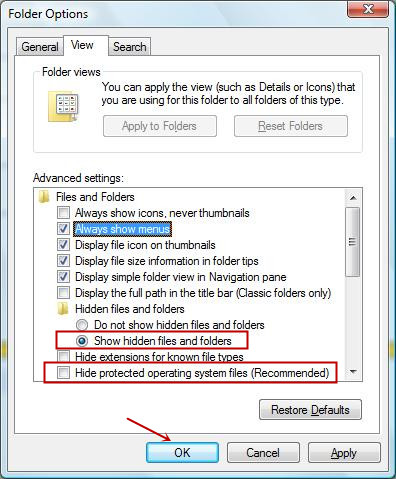
4. Finally look for any suspicious files in the hidden folders as given below and delete it.
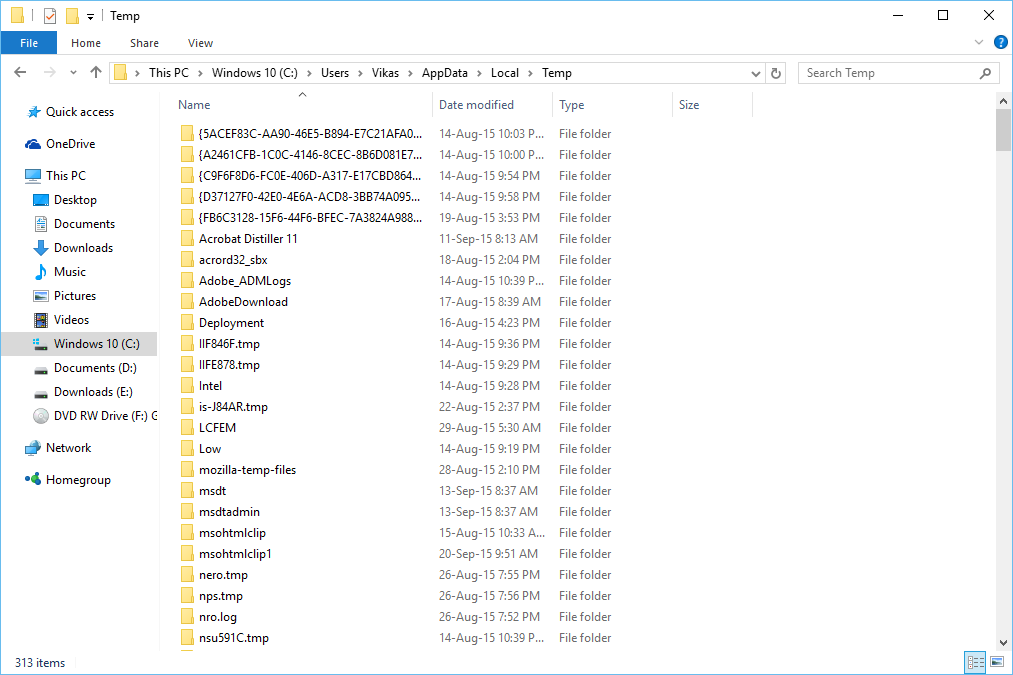
- %AppData%\[adware_name]
- %Temp%\[adware_name]
- %LocalAppData%\[adware_name].exe
- %AllUsersProfile%random.exe
- %CommonAppData%\[adware_name]
Phase 2 : Get Rid of Checking visitor pop-up Related Extensions Related From Different Web Browsers
From Chrome :
1. Click on Menu icon, hover through More Tools then tap on Extensions.

2. Now click on Trash icon on the extensions tab there next to suspicious extensions to remove it.

From Internet Explorer :
1. Click on Manage add-ons option from the drop down menu on going through Gear icon.
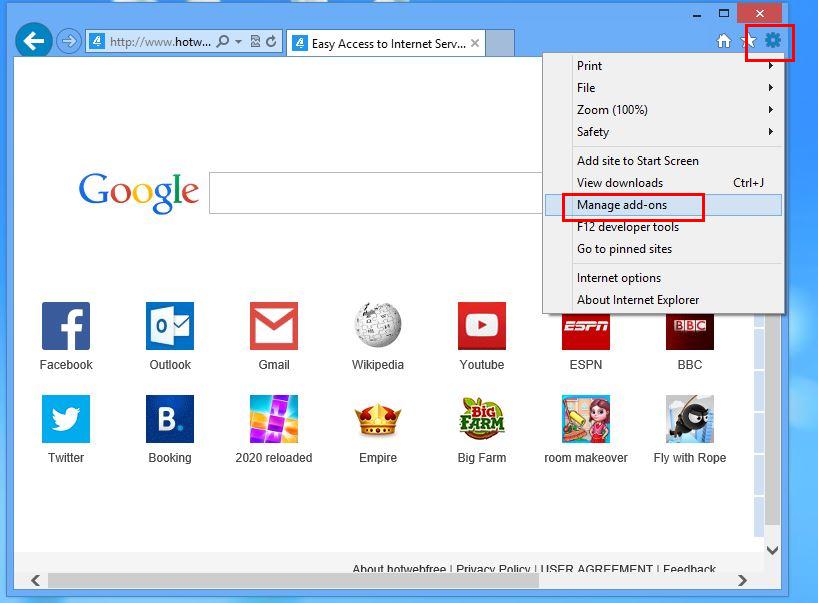
2. Now if you find any suspicious extension in the Toolbars and Extensions panel then right click on it and Delete option to remove it.
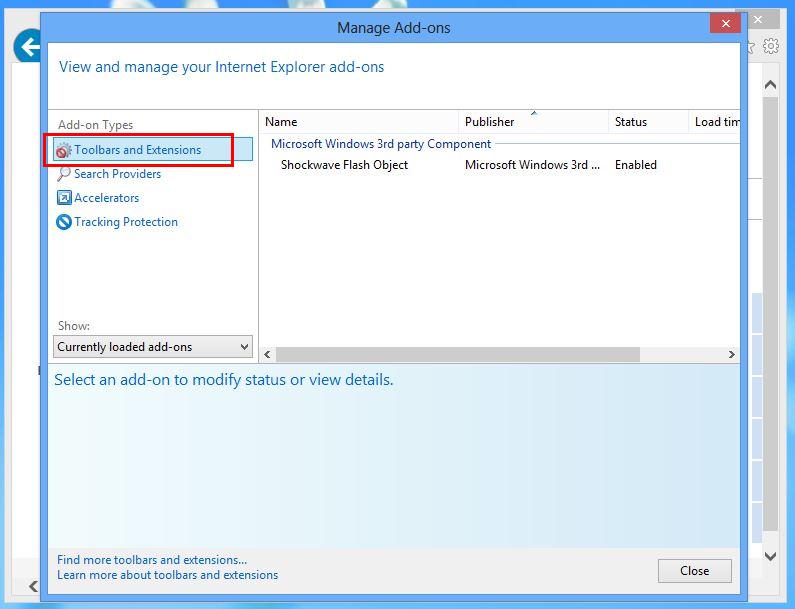
From Mozilla Firefox :
1. Tap on Add-ons on going through Menu icon.
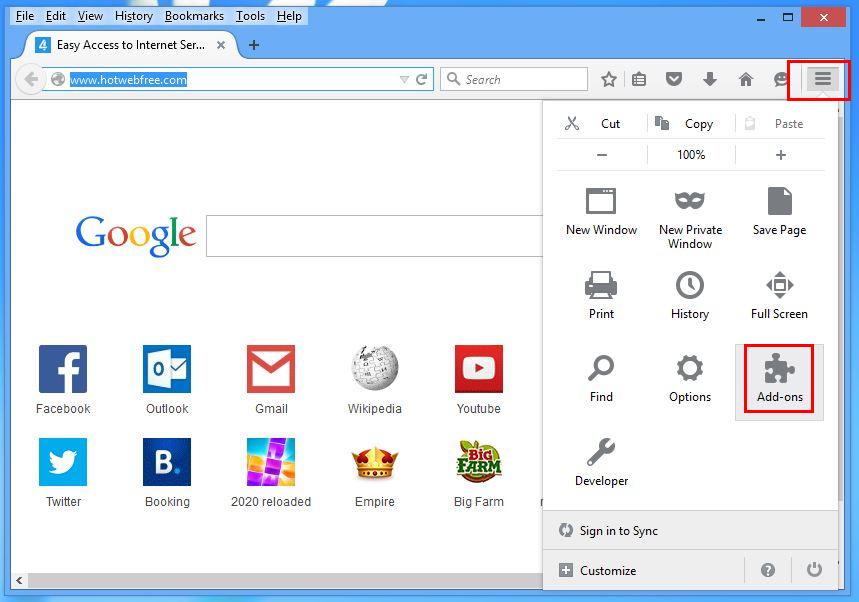
2. In the Extensions tab click on Disable or Remove button next to Checking visitor pop-up related extensions to remove them.

From Opera :
1. Press Opera menu, hover to Extensions and then select Extensions manager there.
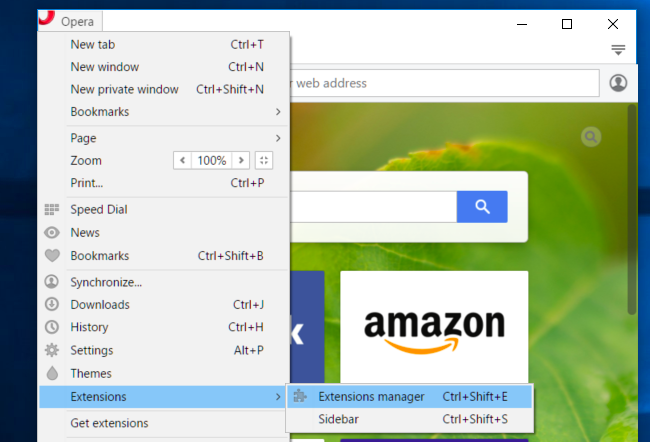
2. Now if any browser extension looks suspicious to you then click on (X) button to remove it.
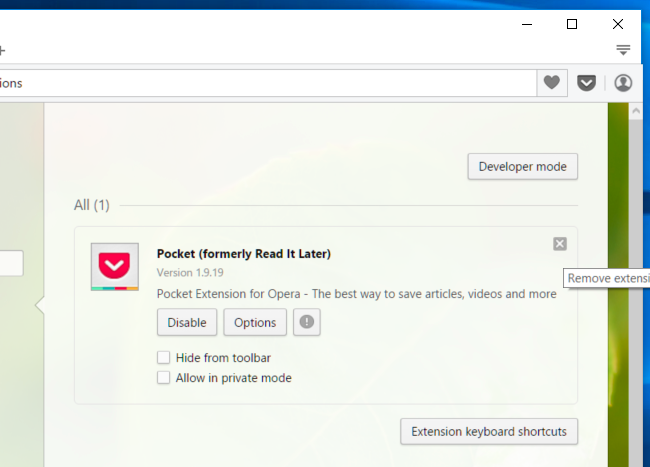
From Safari :
1. Click Preferences… on going through Settings Gear icon.
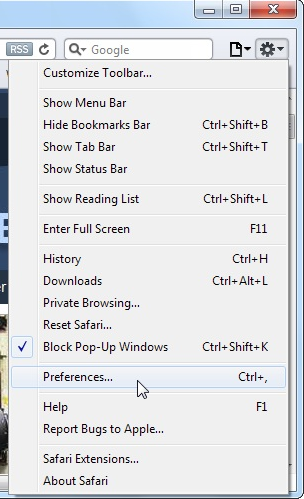
2. Now on Extensions tab click on Uninstall button to remove it.
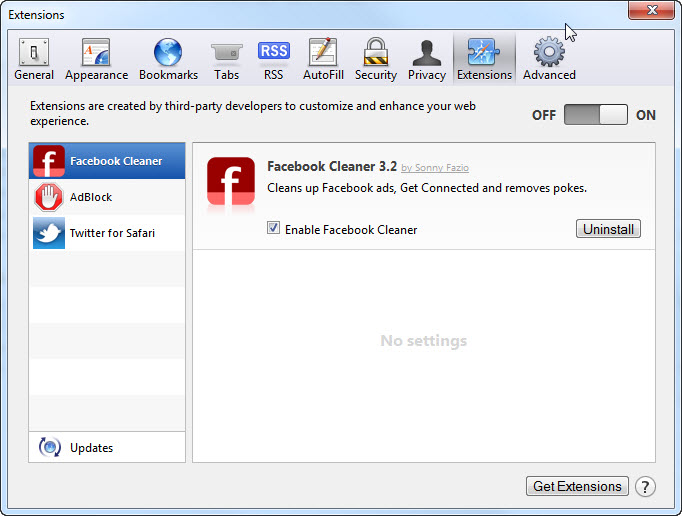
From Microsoft Edge :
Note:–As there is no option for Extension Manager in Microsoft Edge so in order to sort out issues related with adware programs in MS Edge you can change its default homepage and search engine.
Change Default Homepage of Ms Edge –
1. Click on More(…) followed by Settings and then to Start page under Open With section.

2. Now select View advanced settings button and then in Search in the address bar with section, you can select Google or any other homepage as your preference.
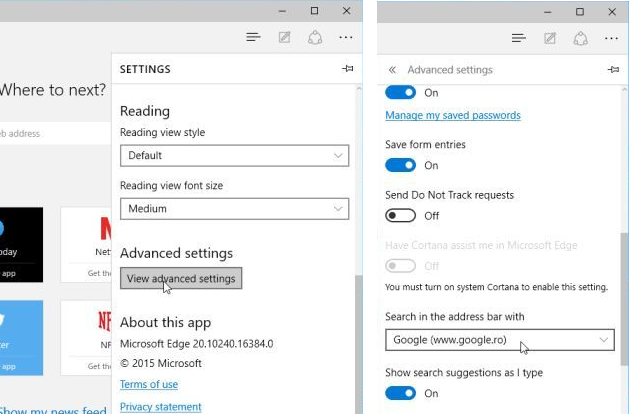
Change Default Search Engine Settings of Ms Edge –
1. Select More(…) then Settings followed by View advanced settings button.

2. Under Search in the address bar with box click on <Add new>. Now you can choose from the available list of search providers or add you preferred search engine and click Add as default.

Phase 3 : Block Unwanted Pop-ups from Checking visitor pop-up On Different Web Browsers
1. Google Chrome : Click Menu icon → Settings → Show advanced settings… → Content Settings… under Privacy section → enable Do not allow any site to show pop-ups (recommended) option → Done.
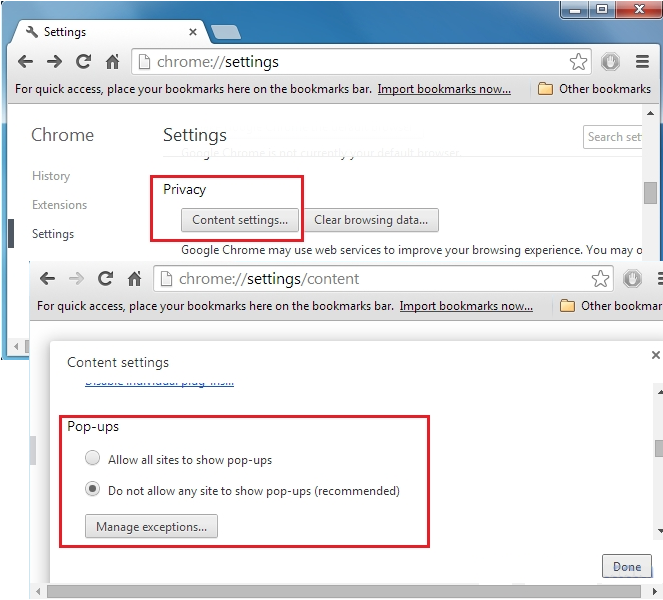
2. Mozilla Firefox : Tap on Menu icon → Options → Content panel → check Block pop-up windows in Pop-ups section.

3. Internet Explorer : Click Gear Settings icon → Internet Options → in Privacy tab enable Turn on Pop-up Blocker under Pop-up Blocker Section.
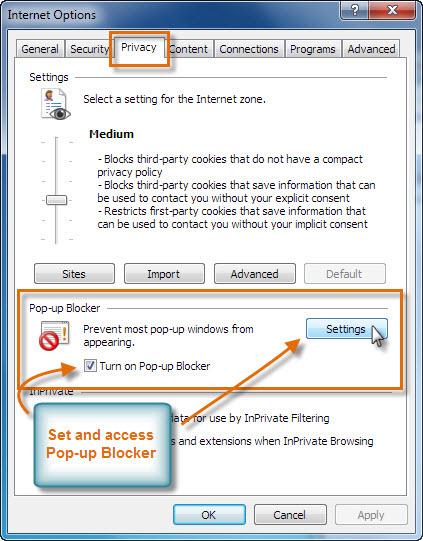
4. Microsoft Edge : Press More(…) option → Settings → View advanced settings → toggle on Block pop-ups.
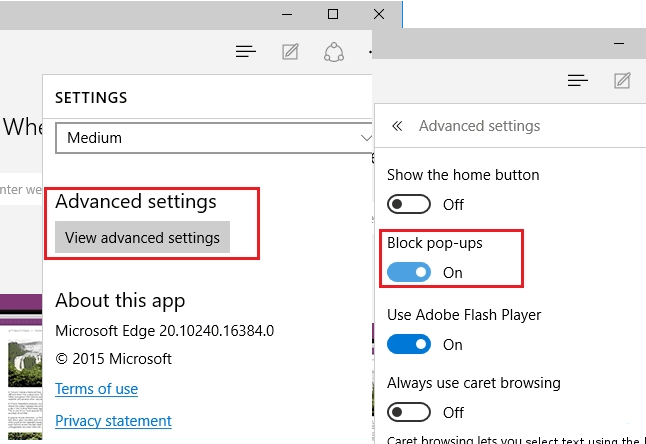
Still having troubles in removing Checking visitor pop-up from your compromised PC ? Then you don’t need to worry. You can feel free to ask questions to us about malware related issues.




